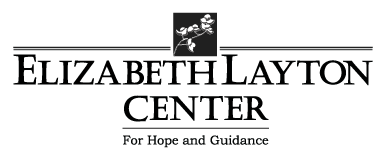People with personality disorders tend to be inflexible, rigid and manipulative. Although most feel that their behaviors are justified and perfectly fine, they often have a tunnel-vision view of the world and have problems connecting with others in socially acceptable ways. Here are examples of a few.
1
Borderline Personality Disorder
A pervasive pattern of instability of interpersonal relationships, self-image, and affects, and marked impulsivity beginning by early adulthood and present in a variety of contexts, as indicated by five (or more) of the following:
- Frantic efforts to avoid real or imagined abandonment.
- A pattern of unstable and intense interpersonal relationships characterized by alternating between extremes of idealization and devaluation.
- Identity disturbance: markedly and persistently unstable self-image or sense of self.
- Impulsivity in at least two areas that are potentially self-damaging (e.g., spending, sex, substance abuse, reckless driving, binge eating). Note: Do not include suicidal or self-mutilating behavior covered in.
- Recurrent suicidal behavior, gestures, or threats, or self-mutilating behavior.
- affective instability due to a marked reactivity of mood (e.g., intense episodic dysphoria, irritability, or anxiety usually lasting a few hours and only rarely more than a few days).
- Chronic feelings of emptiness.
- Inappropriate, intense anger or difficulty controlling anger (e.g., frequent displays of temper, constant anger, recurrent physical fights).
- Transient, stress-related paranoid ideation or severe dissociative symptoms.
2
Antisocial Personality Disorder
Antisocial Personality Disorder is a term that has replaced sociopathy, and psychopathy, in the DSM IV manual to describe a disregard for and violation of the rights of others occurring since age 15 years, as indicated by three (or more) of the following:
- Failure to conform to social norms with respect to lawful behaviors as indicated by repeatedly performing acts that are grounds for arrest.
- Deceitfulness, as indicated by repeated lying, use of aliases, or conning others for personal profit or pleasure.
- Impulsivity or failure to plan ahead.
- Irritability and aggressiveness, as indicated by repeated physical fights or assaults.
- Reckless disregard for safety of self or others.
- Consistent irresponsibility, as indicated by repeated failure to sustain consistent work behavior or honor financial obligations.
- Lack of remorse, as indicated by being indifferent to or rationalizing having hurt, mistreated, or stolen from another.
The individual is at least age 18 years.
There is evidence of conduct disorder with onset before age 15 years.
The occurrence of antisocial behavior is not exclusively during the course of Schizophrenia or a Manic Episode.
3
Histrionic Personality Disorder
Histrionic personality disorder (HPD) is defined by the American Psychiatric Association as a personality disorder characterized by a pattern of excessive emotions and attention-seeking, including inappropriately seductive behavior and an excessive need for approval, usually beginning in early adulthood. People affected by HPD are lively, dramatic, vivacious, enthusiastic, and flirtatious. HPD affects four times as many women as men. It has a prevalence of 2–3% in the general population and 10–15% in inpatient and outpatient mental health institutions.
HPD lies in the dramatic cluster of personality disorders. People with HPD have a high need for attention, make loud and inappropriate appearances, exaggerate their behaviors and emotions, and crave stimulation. They may exhibit sexually provocative behavior, express strong emotions with an impressionistic style, and can be easily influenced by others. Associated features include egocentrism, self-indulgence, continuous longing for appreciation, and persistent manipulative behavior to achieve their own needs.
